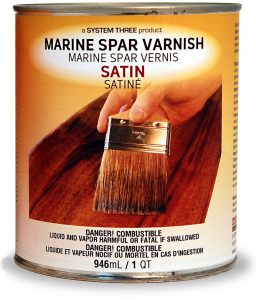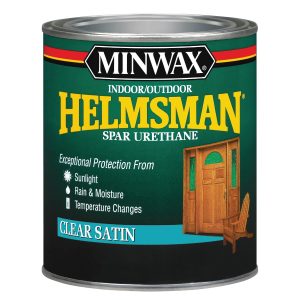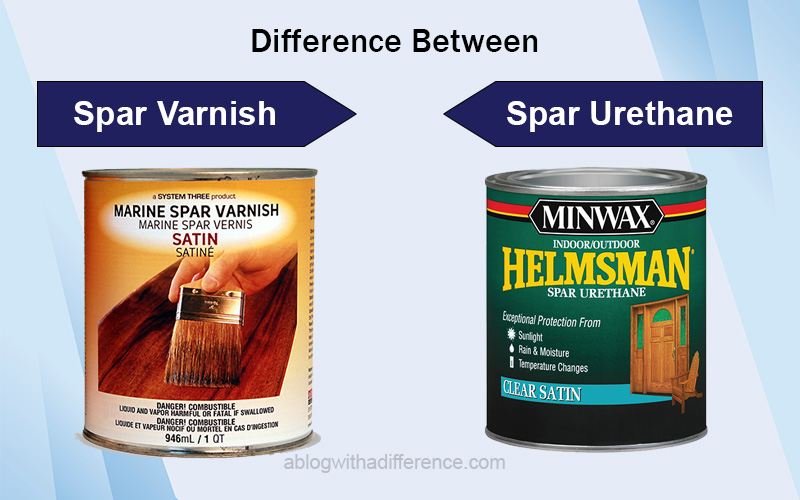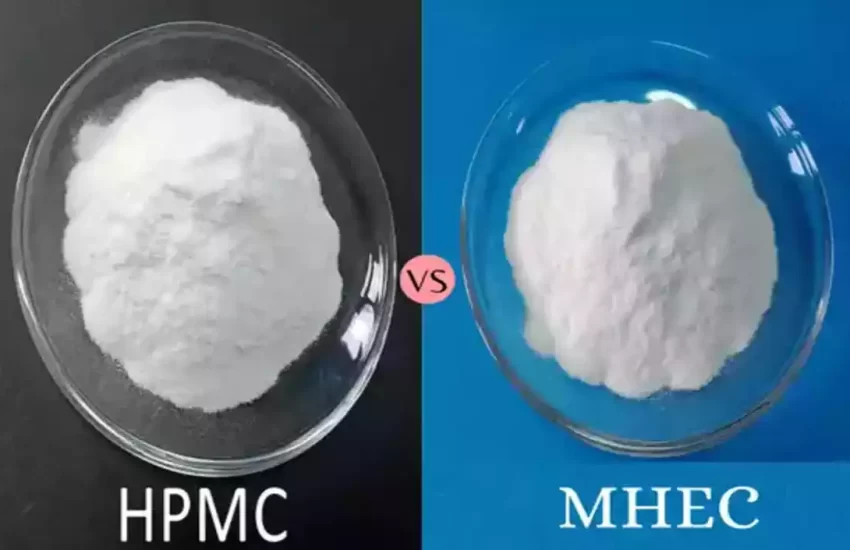Spar Varnish and Spar Urethane which is best
Spar varnish and spar urethane are both types of protective finishes used on wood surfaces, particularly those exposed to outdoor conditions. They provide a durable and long-lasting coating that helps protect the wood from moisture, UV rays, and general wear and tear.
Definition of Spar Varnish
Spar varnish is a type of varnish specifically designed for outdoor and marine applications. An anti-corrosive coating offers exceptional endurance, weatherproofing and protection from UV radiation, water ingress and environmental influences. Spar varnish is typically used on wooden surfaces such as boats, outdoor furniture, doors, and trim, where it helps to enhance and preserve the natural beauty of the wood while providing long-lasting protection.
It is named “spar” varnish because it was originally used to protect the spars (poles or masts) of sailing vessels. Spar varnish comes in both water- and oil-based formulations, giving customers the option of selecting their perfect option based on individual preferences and needs.

Definition of Spar Urethane
Spar urethane is a type of protective finish commonly used for both interior and exterior applications. It is a clear, synthetic resin-based coating that provides excellent durability, protection, and a glossy or satin finish to various surfaces. Spar urethane is known for its resistance to moisture, UV rays, and other environmental elements, making it suitable for use on wooden surfaces exposed to harsh weather conditions. Unlike traditional urethane, spar urethane is specifically formulated to withstand outdoor exposure and offers enhanced durability.
Spar urethane can be applied to doors, furniture cabinets and other woodwork to add an additional layer of protection while simultaneously preserving its natural charm and offering maximum resistance against scratches, wear and water-damage. Spar urethane comes in various shine options that give users control over how much glint their project requires; matte, satin or glossy matte varieties allow users to select an optimal amount of shine for their projects.

Difference Between Spar Varnish and Spar Urethane
Spar Varnish Composition and Characteristics: Spar varnish is typically composed of a combination of natural resins, oils, and additives.
The specific composition can vary between brands, but some common ingredients include:
- Oil: Spar varnish is usually oil-based and may contain oils like linseed oil or tung oil. These oils help provide flexibility and enhance the penetration into the wood.
- Resins: Spar varnish incorporates natural resins, such as pine or amber resin, which contribute to the varnish’s durability and glossiness. These resins form a protective film on the wood surface.
- Drying Agents: To facilitate the drying process, spar varnish may contain additives like metallic dryers or organic drying agents. These agents help the varnish cure and harden more quickly.
Characteristics of spar varnish include:
- Amber Color: Spar varnish has a warm, amber color that can deepen over time, giving a rich and traditional appearance to the wood.
- Glossy Finish: It produces a high-gloss finish that enhances the natural beauty of the wood and provides a smooth, reflective surface.
- UV Protection: Spar varnish offers excellent UV resistance, protecting the wood from the damaging effects of sunlight, which can cause fading, discoloration, and degradation.
- Water Resistance: Spar varnish is highly water-resistant, forming a barrier against moisture penetration. This makes it suitable for outdoor applications and areas exposed to high humidity.
Spar Urethane Composition and Characteristics: Spar urethane is a more modern variation of spar varnish, typically combining urethane resin with additives to enhance its protective properties.
Its composition may include:
- Urethane Resin: Spar urethane contains urethane resin, which is a synthetic material known for its durability and resistance to moisture and chemicals. Urethane resin contributes to the varnish’s toughness and long-lasting properties.
- Solvents: Spar urethane can be formulated as either water-based or oil-based. Water-based spar urethane uses water as a solvent, while oil-based variants use mineral spirits or other petroleum-based solvents.
- Additives: Various additives can be included to improve the flow, leveling, and drying characteristics of the spar urethane. These may include drying agents, leveling agents, and UV inhibitors.
Characteristics of spar urethane include:
- Clear Finish: Spar urethane dries to a clear, transparent finish, allowing the natural color and grain of the wood to show through without yellowing or darkening significantly over time.
- High Durability: Spar urethane is highly durable and resistant to abrasion, chemicals, and water. It provides long-lasting protection for wood surfaces, even under harsh outdoor conditions.
- UV Resistance: Similar to spar varnish, spar urethane offers excellent UV resistance, preventing the wood from being damaged or discolored by sunlight exposure.
- Quick Drying: Depending on the formulation, spar urethane can dry relatively quickly compared to traditional spar varnish, allowing for faster project completion.
It’s important to note that specific brands and formulations may have slight variations in composition and characteristics, so always refer to the manufacturer’s instructions and product labels for detailed information on the specific spar varnish or spar urethane you are using.
Comparison chart
| Criteria | Spar Varnish | Spar Urethane |
|---|---|---|
| Primary Use | Outdoor applications, especially exposed to elements | Indoor and outdoor applications |
| Durability | Good resistance to UV rays, water, and moisture | Provides protection but may not be as resilient outdoors |
| Maintenance | Requires periodic maintenance and recoating | Requires less maintenance, longer time between recoating |
| Appearance | Classic amber hue, enhances natural wood beauty | Various sheen options (gloss, satin, matte) |
| Application Ease | Applied with brush, roller, or spray | Available in brush-on, spray, and wipe-on forms |
| Food-Safe | Not food-safe, should not be used on food surfaces | Not food-safe, should not be used on food surfaces |
| Compatibility | Consider compatibility with substrate and existing finishes | Consider compatibility with substrate and existing finishes |
| Indoor vs. Outdoor Use | Primarily designed for outdoor use | Suitable for both indoor and outdoor use |
| Environmental Considerations | Requires protection from extreme weather conditions | Suitable for various environmental conditions |
Similarities between Spar Varnish and Spar Urethane
Here are some similarities between Spar Varnish and Spar Urethane:
- Protective Coatings: Both spar varnish and spar urethane are types of protective coatings designed to shield wood surfaces from damage and deterioration.
- Weather Resistance: Both spar varnish and spar urethane offer resistance against various weather elements, including UV rays, moisture, and water. This makes them suitable for outdoor applications where the wood is exposed to the elements.
- Enhances Wood Appearance: Both finishes enhance the natural beauty of wood by highlighting its grain patterns, depth, and color. They add luster and depth to the wood surface, giving it a more appealing visual appearance.
- Application Methods: Spar varnish and spar urethane can be applied using similar methods, including brushing, rolling, or spraying. This provides flexibility in choosing the preferred application technique.
- Multiple Sheen Options: Both spar varnish and spar urethane are available in various sheen options, such as gloss, satin, or matte. This allows for customization of the final appearance based on personal preference.
- Recoating: Both finishes require multiple coats to achieve optimal protection and appearance. They can be recoated after the previous coat has dried and are typically sanded between coats for better adhesion.
- Compatibility: Spar varnish and spar urethane are generally compatible with a wide range of wood types, making them versatile options for various woodworking projects.
- Drying and Curing Time: Both finishes require adequate drying and curing time to achieve their full hardness and durability. It is important to follow the manufacturer’s instructions regarding drying time and curing recommendations.
While spar varnish and spar urethane have similarities, it is important to note that there are also distinct differences between them. These differences mainly lie in their composition, characteristics, and specific applications. Considering these differences can help in selecting the most suitable option for your specific project.
Application and Usage
Application and usage of Spar Varnish and Spar Urethane are similar, with a few differences based on the specific characteristics of each product.
Here are the general guidelines for applying and using both finishes:
- Surface Preparation:
- Ensure that the wood surface is clean, dry, and free from dust, dirt, and any previous finishes.
- Sand the wood surface with fine-grit sandpaper to achieve a smooth and even surface. Remove any sanding dust.
- Application:
- Stir the varnish or urethane thoroughly before use, but avoid vigorous shaking, as it can introduce air bubbles.
- Apply the finish using a high-quality brush, foam brush, or sprayer, following the manufacturer’s instructions.
- Apply thin and even coats, working with the wood grain to minimize brush strokes or lap marks.
- Allow the first coat to dry completely according to the manufacturer’s recommended drying time.
- Lightly sand the surface between coats with fine-grit sandpaper to promote adhesion and smoothness. Remove sanding dust before applying subsequent coats.
- Apply multiple coats (typically 2-3 coats) for optimal protection and build-up of the finish.
- Drying and Curing:
- Spar varnish and spar urethane require sufficient drying and curing time. Follow the manufacturer’s instructions for specific drying times between coats and for complete curing.
- Keep in mind that drying times can vary based on temperature, humidity, and thickness of the applied coats.
- Maintenance and Usage:
- Once fully cured, both spar varnish and spar urethane provide a durable and protective finish.
- Avoid exposing the wood to excessive moisture or harsh conditions, if possible, to prolong the lifespan of the finish.
- Regularly clean the surface with a mild detergent and water, avoiding abrasive cleaners that can damage the finish.
- If the finish becomes worn or damaged over time, sand the surface lightly and reapply a fresh coat of spar varnish or spar urethane.
Performance and Protection
Both spar varnish and spar urethane offer excellent performance and protection for outdoor wood surfaces.
Here are the key aspects of their performance and protection:
- Moisture Resistance: Both spar varnish and spar urethane provide good resistance against moisture and water. They form a protective barrier on the wood surface, preventing water absorption, which helps to minimize the risk of wood rot, warping, and other moisture-related damage.
- UV Protection: One of the primary benefits of both spar varnish and spar urethane is their ability to protect the wood from the damaging effects of ultraviolet (UV) rays. They contain UV inhibitors that help to reduce fading, discoloration, and degradation caused by prolonged exposure to sunlight.
- Durability: Spar varnish and spar urethane are known for their durability and ability to withstand harsh outdoor conditions. They form a hard and resilient protective layer on the wood surface, providing resistance against scratches, abrasion, and general wear and tear.
- Weather Resistance: Both finishes offer excellent weather resistance, including protection against temperature fluctuations and moisture-related expansion and contraction of the wood. This helps to maintain the structural integrity of the wood and prevent damage caused by changes in weather conditions.
- Longevity: When properly applied and maintained, spar varnish and spar urethane can provide long-lasting protection to outdoor wood surfaces. The specific longevity will depend on factors such as the quality of the product, the application technique, and the level of exposure to environmental conditions.
- Aesthetic Enhancement: In addition to protection, spar varnish and spar urethane enhance the appearance of the wood. Spar varnish typically provides a high-gloss finish with an amber hue, giving the wood a traditional and rich look. Spar urethane, on the other hand, dries to a clear finish that maintains the natural color and grain of the wood.
It’s worth noting that the performance and protection of spar varnish and spar urethane can vary between different brands and formulations. It’s important to choose a high-quality product from a reputable manufacturer and follow the specific application and maintenance instructions provided by the manufacturer for optimal results.
Appearance and Finish
The appearance and finish of spar varnish and spar urethane differ based on their composition and characteristics.
Here’s an overview of their respective appearances and finishes:
Spar Varnish: Spar varnish is known for its traditional and classic look. It typically dries to a high-gloss finish, which provides a shiny and reflective surface. The varnish has an amber color, which can deepen over time, giving the wood a warm and rich appearance. This amber hue adds depth and character to the wood grain, enhancing its natural beauty. The glossy finish of spar varnish can create a smooth and polished look, adding an elegant touch to the woodwork.
Spar Urethane: Spar urethane, on the other hand, dries to a clear finish, maintaining the natural color and grain of the wood. Unlike spar varnish, spar urethane does not have an amber hue, so it preserves the original appearance of the wood without adding any significant color. The finish of spar urethane can range from satin to semi-gloss or even high-gloss, depending on the specific product and the desired level of sheen. The clear finish of spar urethane allows the beauty of the wood to shine through while providing protection and enhancing its natural aesthetics.
When considering the appearance and finish of spar varnish and spar urethane, it’s important to note that personal preference and the desired aesthetic effect play a significant role. Spar varnish offers a more traditional and glossy look with an amber tone, while spar urethane provides a clear and versatile finish that highlights the natural beauty of the wood without altering its color significantly. Ultimately, the choice between the two will depend on the desired appearance and the specific project requirements.
Drying Time and Recoating
The drying time and recoating intervals for spar varnish and spar urethane can vary depending on the specific brand, formulation, and environmental conditions. It’s essential to follow the manufacturer’s instructions provided on the product label for accurate information.
That being said, here are some general guidelines regarding drying time and recoating for both finishes:
Spar Varnish:
- Drying Time: Spar varnish typically has a relatively slow drying time compared to other finishes. It can take anywhere from several hours to overnight for each coat to dry. The specific drying time depends on factors such as temperature, humidity, and thickness of the applied coat. It’s crucial to allow sufficient drying time before applying additional coats or subjecting the surface to any stress or contact.
- Recoating: Once the initial coat of spar varnish has dried, it is generally recommended to lightly sand the surface with fine-grit sandpaper to promote adhesion and smoothness. Remove any sanding dust before applying subsequent coats. Apply additional coats of spar varnish following the same application process as the first coat. It is advisable to allow each coat to dry completely before applying the next coat. Depending on the specific product and desired level of protection, 2-3 coats of spar varnish are often recommended.
Spar Urethane:
- Drying Time: Spar urethane generally has a faster drying time compared to spar varnish, but it still requires adequate drying time between coats. Water-based spar urethane tends to dry faster than oil-based variants. Typically, each coat of spar urethane can take a few hours to dry, but it’s best to refer to the manufacturer’s instructions for specific drying times. As with spar varnish, the drying time can be influenced by factors like temperature, humidity, and the thickness of the coat.
- Recoating: Once the initial coat of spar urethane has dried, it’s recommended to lightly sand the surface with fine-grit sandpaper to ensure adhesion and smoothness for subsequent coats. Remove any sanding dust before applying the next coat. Apply additional coats of spar urethane, allowing each coat to dry thoroughly before applying the next one. Depending on the desired level of protection and finish, 2-3 coats of spar urethane are typically applied.
It’s important to note that these drying times and recoating intervals are general guidelines and can vary depending on the specific product and environmental conditions. Always refer to the instructions provided by the manufacturer for the most accurate and up-to-date information regarding drying time and recoating for the particular spar varnish or spar urethane you are using.
Considerations and Limitations
When working with spar varnish and spar urethane, there are several considerations and limitations to keep in mind.
These include:
- Outdoor Use: Spar varnish and spar urethane are specifically designed for outdoor applications. They offer enhanced protection against moisture, UV rays, and general weathering. However, they may not provide the same level of durability and protection in high-moisture environments or extreme weather conditions. In such cases, specialized marine-grade finishes may be more suitable.
- Application Environment: Both spar varnish and spar urethane are best applied in a well-ventilated area. Adequate ventilation helps with the drying process and ensures proper fume dispersion. Avoid applying these finishes in excessively hot or humid conditions, as it may affect drying time and adhesion.
- Surface Preparation: Proper surface preparation is crucial for the adhesion and longevity of the finish. Ensure the wood surface is clean, dry, and free from dust, dirt, and previous finishes. Smooth the surface by sanding, removing any imperfections or roughness.
- Multiple Coats: Spar varnish and spar urethane typically require multiple coats for optimal protection and finish. It’s important to allow sufficient drying time between coats and follow the manufacturer’s recommendations regarding the number of coats needed. Applying too many coats or recoating too quickly can lead to improper drying, poor adhesion, or other issues.
- Maintenance and Recoating: Over time, the protective finish may wear off due to exposure to the elements. Regular maintenance, such as cleaning and periodic recoating, is necessary to maintain the protection and appearance of the wood. Follow the manufacturer’s instructions for recoating intervals and proper surface preparation before applying additional coats.
- Compatibility and Overcoating: Spar varnish and spar urethane are generally compatible with each other. However, it’s essential to ensure compatibility when applying spar urethane over existing spar varnish or vice versa. Always check the manufacturer’s guidelines to confirm the compatibility and adhesion of different products.
- Indoor Use: While spar varnish and spar urethane are primarily designed for outdoor use, they can also be used indoors. However, their high-gloss finish and amber color may not be suitable for all indoor applications. Consider the aesthetic requirements of your project before using these finishes indoors.
Always consult the specific product instructions and guidelines provided by the manufacturer for detailed information and any limitations associated with the particular spar varnish or spar urethane you are using.
Choosing the Right Option
Choosing the right option between spar varnish and spar urethane depends on several factors, including the specific project requirements and the desired outcome.
Here are some considerations to help you make an informed decision:
- Project Type: Consider the nature of your project. Spar varnish is traditionally used for outdoor applications, such as wooden boats, decks, and outdoor furniture, where it provides excellent protection against weather elements. Spar urethane, on the other hand, is more versatile and can be used for both indoor and outdoor projects.
- Durability and Protection: Assess the level of durability and protection needed for your project. Spar varnish offers good resistance against UV rays, water, and moisture, making it suitable for projects exposed to harsh outdoor conditions. Spar urethane also provides protection but may not be as resilient to extreme outdoor environments as spar varnish.
- Maintenance: Consider the maintenance requirements of the finish. Spar varnish typically requires periodic maintenance and recoating to maintain its protective properties and appearance. Spar urethane generally requires less maintenance and may have a longer lifespan between recoating.
- Appearance: Evaluate the desired aesthetic outcome for your project. Spar varnish imparts a classic amber hue and enhances the natural beauty of wood with its rich, glossy finish. Spar urethane offers different sheen options, including gloss, satin, and matte, allowing you to choose the desired level of shine and appearance.
- Application Ease: Consider the ease of application and your level of experience. Spar varnish is typically applied with a brush, roller, or spray, and proper surface preparation is crucial for optimal results. Spar urethane is available in various application forms, including brush-on, spray, and wipe-on, offering flexibility and ease of use.
- Indoor vs. Outdoor Use: Determine whether your project is primarily for indoor or outdoor use. Spar varnish is specially formulated for outdoor applications and is designed to withstand the rigors of harsh weather conditions. Spar urethane is suitable for both indoor and outdoor use, making it a versatile choice.
- Environmental Considerations: Consider any specific environmental factors that may impact your project. If your project involves surfaces that come into contact with food or beverages, neither spar varnish nor spar urethane is recommended due to their lack of food-safe properties.
- Compatibility: Assess the compatibility of the chosen finish with the substrate and any existing finishes or coatings. Ensure that the selected option is compatible with the specific type of wood or material you are working with.
- Manufacturer Recommendations: Consult the manufacturer’s guidelines and recommendations for each product you are considering. They provide valuable information on application, drying time, recoating, and any limitations or precautions to be aware of.
The right choice between spar varnish and spar urethane depends on your specific project requirements, the intended use and environment, and the desired appearance and level of protection. Consider all these aspects when making your selection; be mindful to consider both advantages and drawbacks and select one which meets all of your personal preferences and requirements.
Conclusion
Spar varnish and Spar urethane depends on the specific requirements of your project. Spar varnish is traditionally used for outdoor applications and provides good protection against UV rays, water, and moisture. It enhances the natural beauty of wood with its classic amber hue and glossy finish. However, it requires periodic maintenance and may be more suitable for projects exposed to harsh outdoor conditions.


